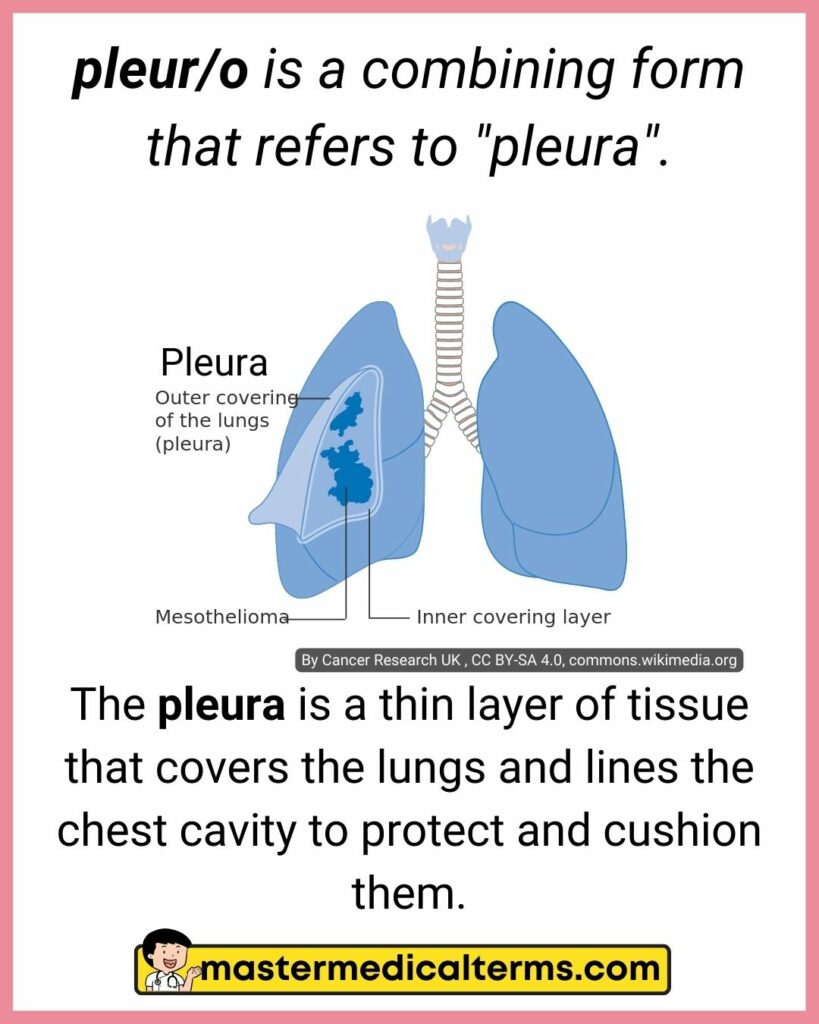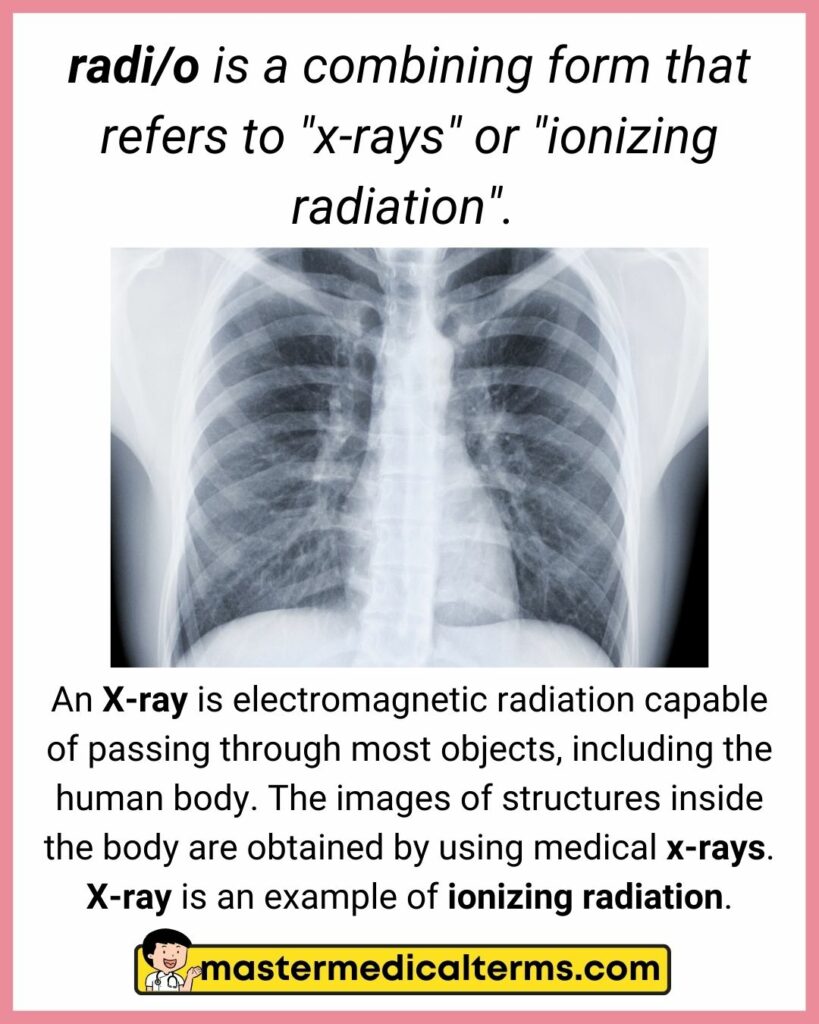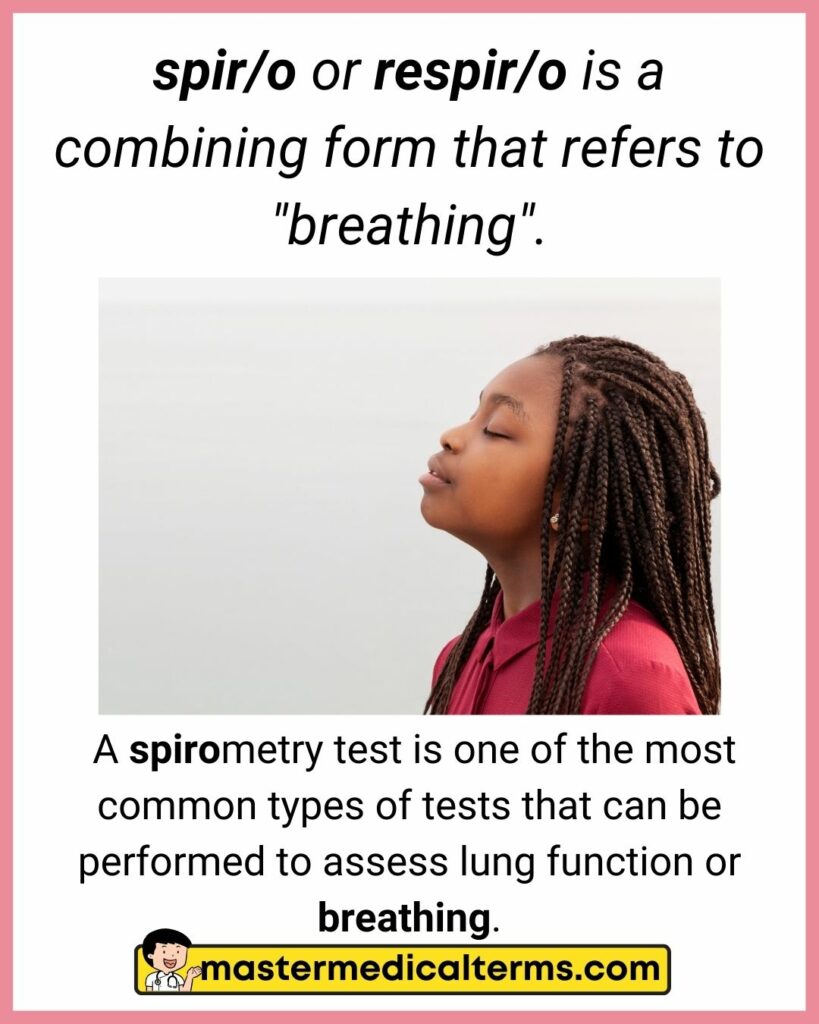In this flashcard review list, you will be able to identify and expand your knowledge of combining forms and root words that are associated with the respiratory system.
#1 alveol/o
#2 bronch/o, bronch/i, bronchi/o
#3 bronchiol/o
#4 capn/o
#5 epiglott/o
#6 laryng/o
#7 lob/o
#8 muc/o
#9 nas/o, rhin/o
#10 ox/i
#11 pharyng/o
#12 phon/o, son/o
#13 phren/o, diaphragmat/o
#14 phrenic/o
#15 pleur/o
#16 pulm/o, pulmon/o, pneumon/o, pneum/o, pneumat/o
#17 radi/o
radi/o is a combining form that refers to "x-rays" or "ionizing radiation".
An X-ray is electromagnetic radiation capable of passing through most objects, including the human body. The images of structures inside the body are obtained by using medical x-rays. X-ray is an example of ionizing radiation.

























